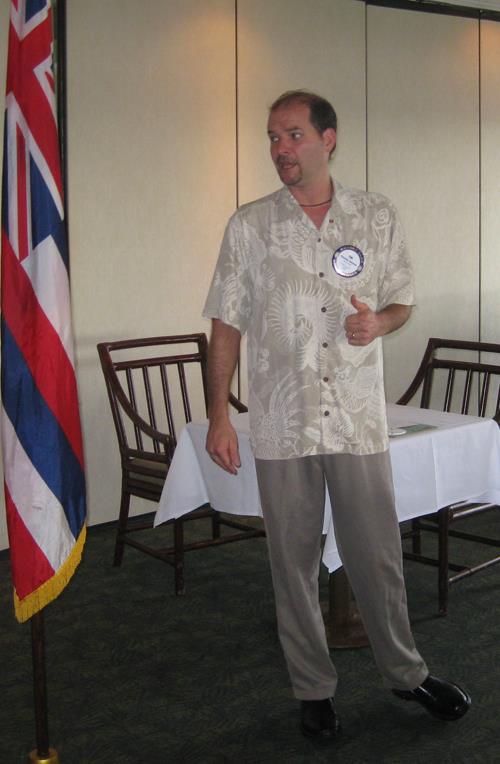July 23 Speaker: Member Tim Hansen
Restorative Justice Can Strengthen Communities
With 2.6 million people incarcerated in the US, and the recidivism rate 67 percent in Hawaii alone, Tim Hansen says an answer may be the trend  called restorative justice.
called restorative justice.
 called restorative justice.
called restorative justice.Restorative justice, he explains, aims to make it better for the victim, ad often helps the criminal as well. "Crime victims want a voice in the criminal justice system," he says. Sometimes they want to talk to the perpetrator for some kind of closure.
Tim spoke at Wednesday's (7.23.14) meeting about his work at the Hawaii County Prosecutor's Office, as well as on the mainland.
When a crime happens, he says, rather than simply ask who did it, they ask, "who was harmed and what are their needs."
It can help the offender too, Tim says. "They often don't get a change to tell the truth." The system is set up in a way that legalities get in the way of truth telling. "There are many good things in our criminal justice system" he says, "but many things are lacking."
He asked the audience why a victim might want to engage in restorative justice. Some of the answers included that folks want to get stolen stuff back; regain a sense of power; be compensated for damages, or that something good may come out of it, such as preventing future crime. Sometimes, often even, there's a sense of forgiveness.
The restorative framework with the offender is based on "what you did was wrong and bad," but not that the person, at his or her core, is wrong or bad.
Criminals often objectify their victims, but if it can be personalized, put a human face to it. Tim talked about Native American, Hawaiian and other groups' methods of dealing with an offender, from hooponopono and peace circles.
